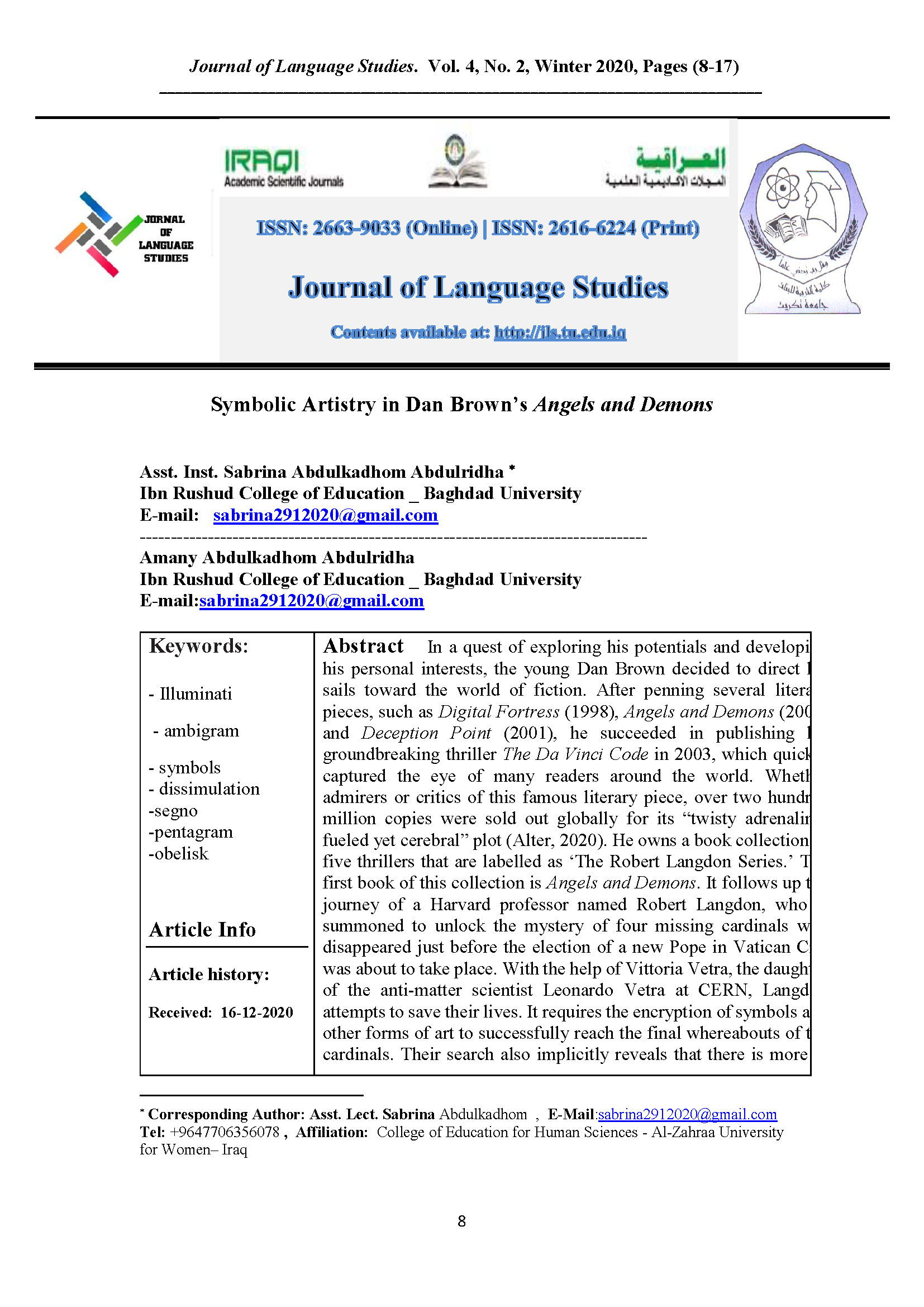Symbolic Artistry in Dan Brown’s Angels and Demons
DOI:
https://doi.org/10.25130/jls.4.2.2Keywords:
Illuminati, ambigram, symbols, dissimulation, segno, pentagram, obeliskAbstract
In a quest of exploring his potentials and developing his personal interests, the young Dan Brown decided to direct his sails toward the world of fiction. After penning several literary pieces, such as Digital Fortress (1998), Angels and Demons (2000) and Deception Point (2001), he succeeded in publishing his groundbreaking thriller The Da Vinci Code in 2003, which quickly captured the eye of many readers around the world. Whether admirers or critics of this famous literary piece, over two hundred million copies were sold out globally for its “twisty adrenaline-fueled yet cerebral” plot (Alter, 2020). He owns a book collection of five thrillers that are labelled as ‘The Robert Langdon Series.’ The first book of this collection is Angels and Demons. It follows up the journey of a Harvard professor named Robert Langdon, who is summoned to unlock the mystery of four missing cardinals who disappeared just before the election of a new Pope in Vatican City was about to take place. With the help of Vittoria Vetra, the daughter of the anti-matter scientist Leonardo Vetra at CERN, Langdon attempts to save their lives. It requires the encryption of symbols and other forms of art to successfully reach the final whereabouts of the cardinals. Their search also implicitly reveals that there is more to

